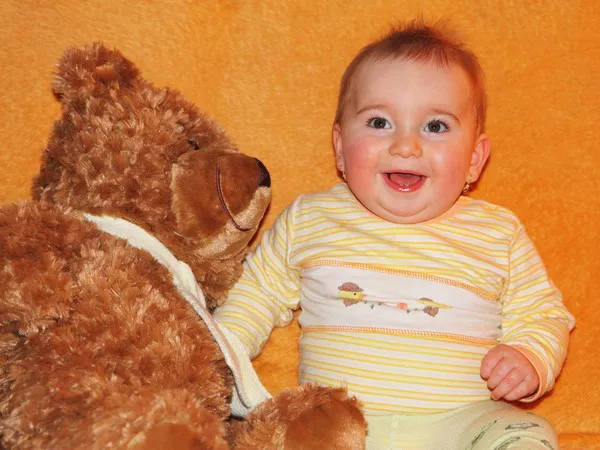As your baby reaches the 6 to 9-month mark, you may notice significant changes in their growth and development. One area that requires attention during this time is their feet. As they begin to explore their surroundings and embark on their journey of mobility, finding the right size shoe becomes crucial. Today, we will delve into the world of baby shoe sizes and guide you in selecting the appropriate footwear for your little one.
Understanding Baby Shoe Sizes
Baby shoe sizes can be a bit confusing, especially for first-time parents. Unlike adult shoe sizes that follow a standard numerical system, baby shoe sizes are based on age ranges and foot measurements. It’s important to note that every baby’s feet grow at their own pace, so these size ranges serve as general guidelines.
Measuring Your Baby’s Feet
Before diving into the specific shoe sizes, it’s essential to measure your baby’s feet accurately. Here’s a simple guide to help you get the most accurate measurements:
-
Prepare a sheet of paper, a pencil, and a measuring tape or ruler.
-
Place the sheet of paper on a flat surface.
-
Gently place your baby’s foot on the paper, making sure their weight is evenly distributed.
-
Use the pencil to trace an outline of their foot, ensuring the pencil is held vertically.
-
Measure the length of the foot from the heel to the longest toe using the measuring tape or ruler.
-
Repeat the process for the other foot, as there may be slight differences in size.
Determining the Right Shoe Size
Once you have measured your baby’s feet, you can refer to the following size chart as a general reference for baby shoe sizes:
Size 1: Age 0-3 months | Foot Length: Approximately 3.5 inches (8.9 cm) Size 2: Age 3-6 months | Foot Length: Approximately 3.75 inches (9.5 cm) Size 3: Age 6-9 months | Foot Length: Approximately 4.125 inches (10.5 cm) Size 4: Age 9-12 months | Foot Length: Approximately 4.5 inches (11.4 cm)
It’s important to note that these measurements may vary slightly depending on the shoe brand and style. It’s always a good idea to consult the specific size chart provided by the shoe manufacturer when making a purchase.
Choosing the Right Shoe Style
While it’s tempting to dress your little one in adorable miniature shoes, it’s important to prioritize their comfort and foot development. During the 6 to 9-month age range, babies are typically in the early stages of crawling, pulling up, and possibly even taking their first steps. As such, their shoes should be designed to support these milestones.
Here are some factors to consider when choosing the right shoe style for your baby:
- Flexible and Soft Soles:
Opt for shoes with flexible and soft soles that mimic the natural movement of bare feet. This allows their feet to develop strength and coordination.
- Breathable Materials:
Choose shoes made from breathable materials such as leather or mesh to promote air circulation and prevent excessive sweating.
- Room for Growth:
Ensure that the shoes have some room for growth, typically around half an inch (1.27 cm), to accommodate their expanding feet. However, avoid shoes that are excessively large, as they may hinder proper foot movement.
- Secure Closures:
Look for shoes with adjustable closures such as Velcro straps or elastic laces. This allows for a snug and secure fit, preventing the shoes from slipping off during activity.
- Avoid Restrictive Shoes:
Steer clear of shoes with rigid soles,tight-fitting designs, or pointed toes. These types of shoes can cause discomfort, restrict movement, and hinder proper foot development.
Size Chart for 6-9 Months Old
When it comes to determining the right shoe size for your baby, it can be helpful to refer to a size chart that takes into account their age and foot length. Keep in mind that every baby is unique, and their feet may vary in size and shape.
Here is a general size chart for babies aged 6-9 months:
- Foot length: 3.5 inches (8.9 cm)
- US shoe size: 2
- UK shoe size: 1
- EU shoe size: 17-18
It is important to note that this size chart is just a guideline, and you should always measure your baby’s feet before purchasing shoes. To measure your baby’s foot, place it on a piece of paper and trace around it, then measure the distance from the heel to the longest toe. It is also recommended to measure their feet at the end of the day when they are at their largest.
Final Thoughts
Choosing the right shoe size for your baby can feel overwhelming, but it doesn’t have to be. By considering factors such as flexible soles, breathable materials, room for growth, and secure closures, you can find a comfortable and safe shoe that supports your baby’s foot development.
Remember to always measure your baby’s feet and refer to size charts as a general guideline. And don’t forget to keep an eye on their feet as they grow and develop, as their shoe size may change quickly during their first year of life. With a little bit of research and attention to detail, you can find the perfect shoes for your little one’s growing feet.


